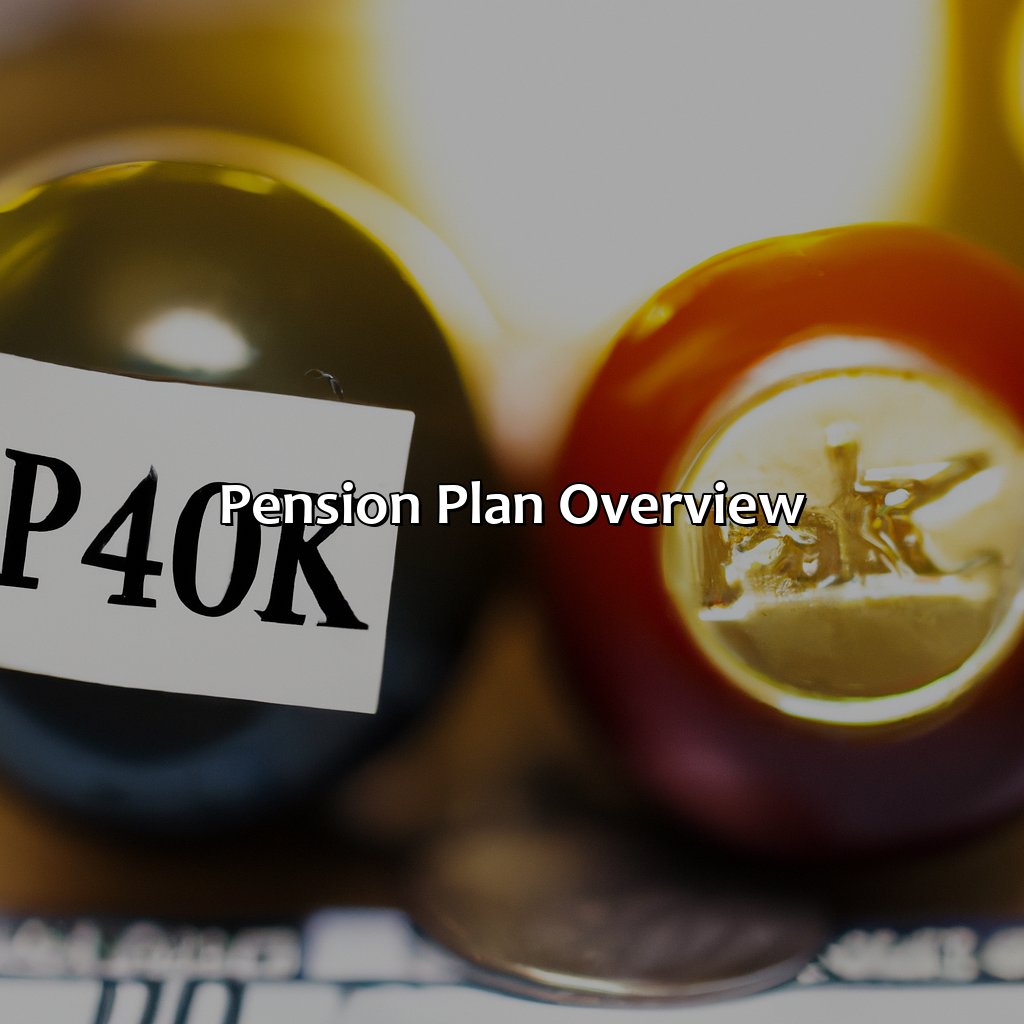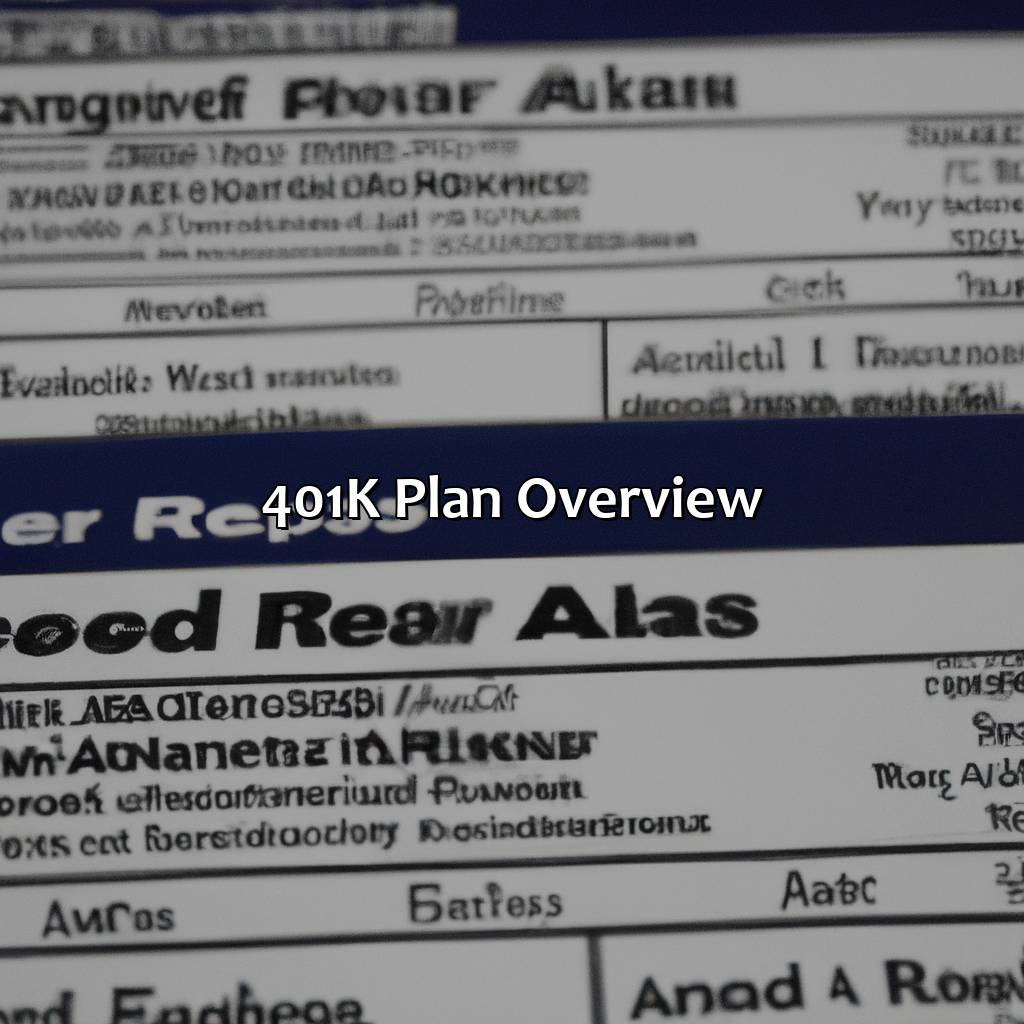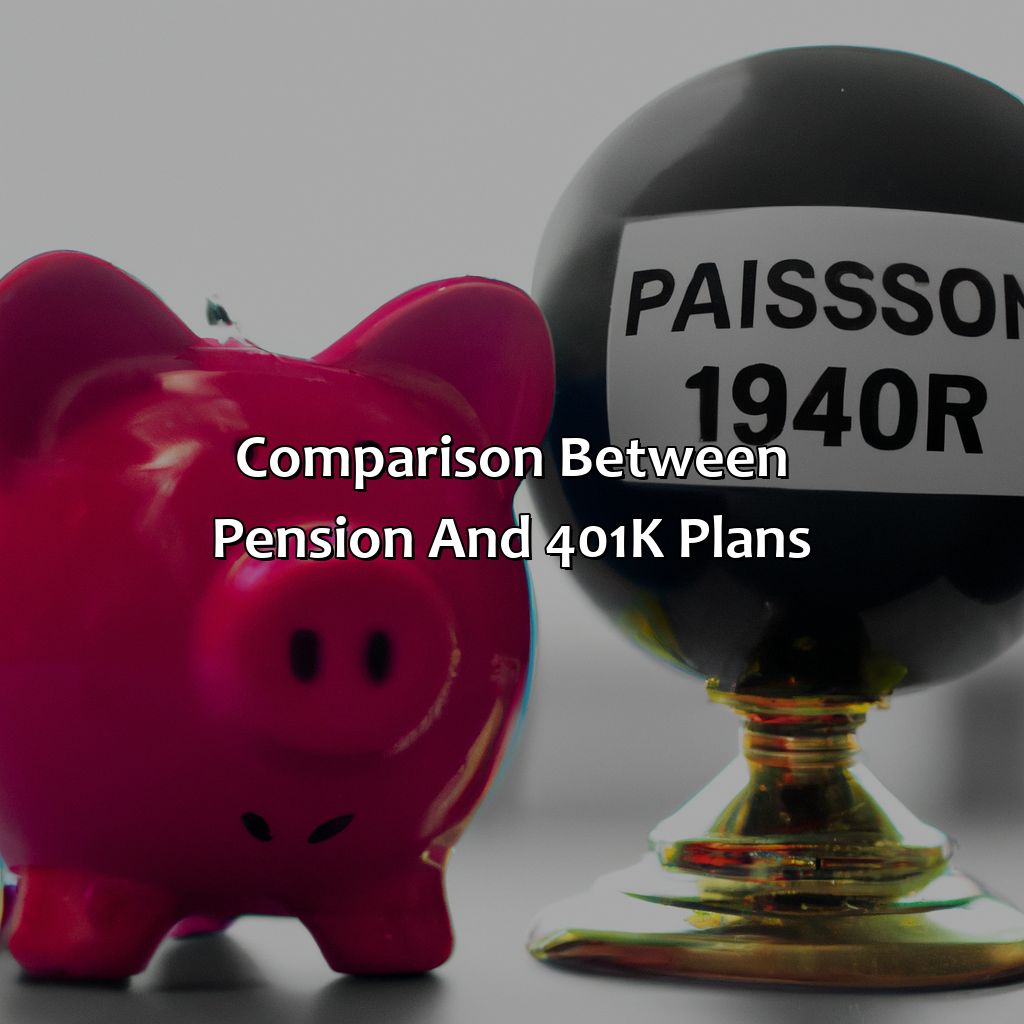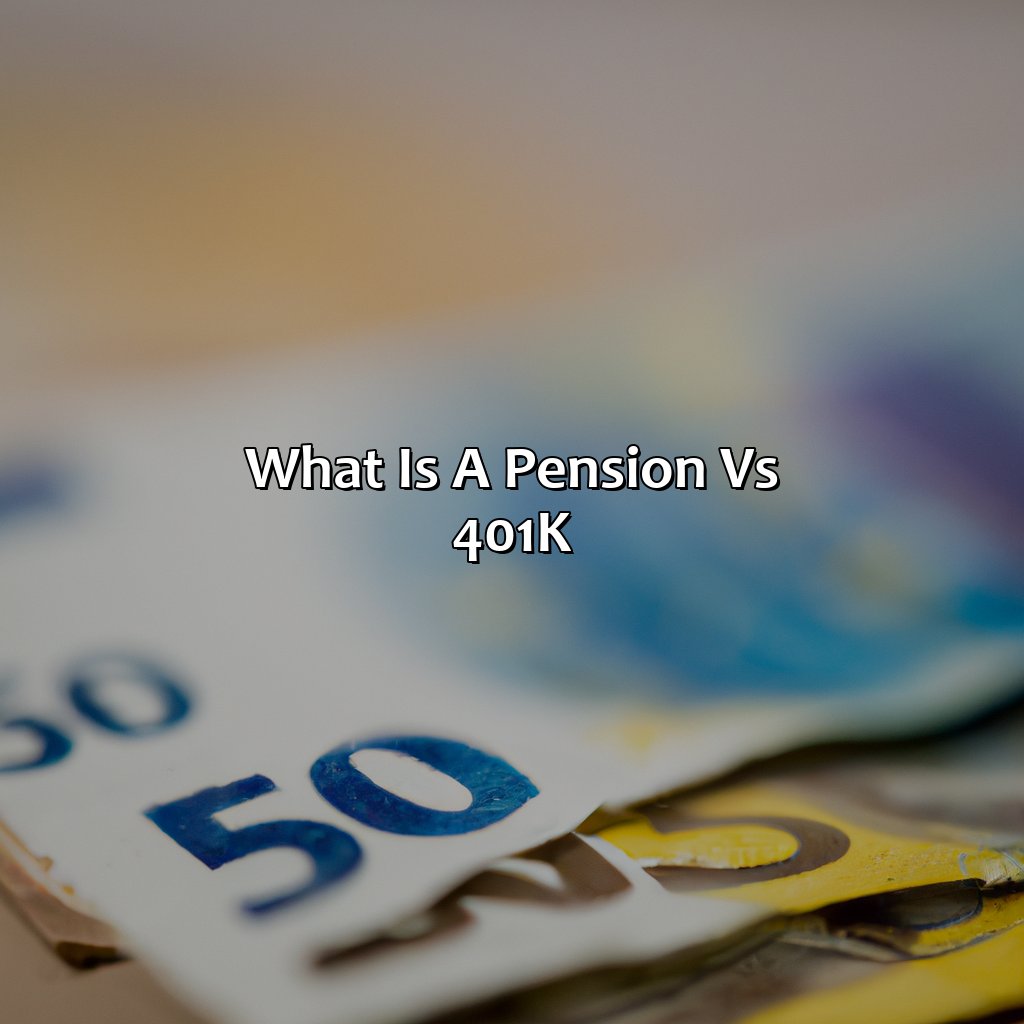What Is A Pension Vs 401K?
Key Takeaways:
- A pension plan is a retirement plan where an employer promises a set payout to an employee after they retire, typically based on salary and years of service. A 401(k) plan, on the other hand, is a defined contribution plan where the employee contributes a portion of their salary to the plan, often matched by the employer.
- With a defined benefit pension plan, the employer bears the investment risk and the employee is guaranteed a set payout. With a defined contribution pension plan like a 401(k), the employee bears the investment risk and the payout is not guaranteed.
- While pension plans may offer the security of a promised payout, 401(k) plans offer more control over investment decisions and portability between jobs. Ultimately, the choice between a pension and 401(k) plan depends on an individual’s financial goals and risk tolerance.
Are you uncertain about the difference between a pension and a 401(k)? Don’t worry, you’re not alone. Get the facts on these retirement accounts and figure out which one is right for you. You deserve to make the most out of your retirement!
Pension Plan overview
Knowledge of pension plans and 401k require insight into the different types of pension plans companies provide. Two of these being a Defined Benefit Plan and a Defined Contribution Plan.
Here, we’ll give an overview of the pension plan. Then, in the subsections, we’ll give you a brief description of both the Defined Benefit Plan and the Defined Contribution Plan.

Image credits: retiregenz.com by Adam Duncun
Defined Benefit Plan
A Retirement Benefit Plan that guarantees a fixed amount of payment to employees upon their retirement is referred to as an Assured Entitlement Program. This form of pension program is known as a Defined Benefit Plan. An employer is responsible for financing this plan, and the workers are offered a specific sum as a benefit based on their years of employment. The plan’s payout rate increases as the length of time spent by the staff in the company grows, making it distinct from other retirement schemes.
There are several advantages to using Defined Benefit Plans, such as significant monthly payment over the course of one’s lifetime, ease of use, and clear knowledge because they provide guaranteed payments. It appeals to older individuals or those who prefer a certain level of comfort in retirement and wish to safeguard their savings from market risks. The employer assumes all responsibilities under this plan, including benefits paid to clients regardless of how much money they have contributed. If you want to learn more about occupational pensions, click here.
Pro Tip: Before choosing your preferred retirement savings scheme, analyze your financial position and work with economic consultants to determine which option best meets your needs.
Your contribution to a defined contribution plan is like a box of chocolates, you never know what retirement you’re gonna get.
Defined Contribution Plan
A Defined Contribution Plan is a retirement savings plan in which both the employee and employer make periodic contributions. The investment growth or loss belongs to the employee, who also bears the risk of investments. Employers usually match a portion or all of employee contributions.
This type of plan is very popular as it allows employees to choose their investment portfolio and manage their own retirement savings. Some common examples of this plan include the 401(k), 403(b) and 457(b). If you’re wondering what happens to your pension if you leave before vested, understanding these plans is important. The contribution limits for these plans are set by the Internal Revenue Service (IRS) every year.
It’s worth noting that a defined contribution plan differs from a defined benefit plan, in which employers guarantee specific retirement benefits for employees based on factors such as length of service and salary history.
By participating in a Defined Contribution Plan, you can effectively save for your golden years without being entirely dependent on social security income. Don’t miss out on securing yourself financially by enrolling today!
Get ready to kiss your coffee addiction goodbye, because understanding 401(k) plans will be the only buzz you need.
401(K) Plan overview
To comprehend 401(K) plans, you need to learn about the Traditional and Roth 401(K) Plans. These two plans can help you differentiate between them. Therefore, you can make wise choices regarding your retirement planning.

Image credits: retiregenz.com by Adam Washington
Traditional 401(K) Plan
Traditional 401(K) Plan refers to the normal employee savings retirement plan. It allows employees to contribute a portion of their wages on a pre-tax basis, which significantly helps them in reducing their taxable income. The amount remains uncharged until withdrawal at certain conditions.
- It is the most common retirement plan in the US.
- Employees can contribute up to $19,500 per year and catch-up contributions annually for those aged 50 or older.
- Employers can also make matching contributions based on their predetermined formula.
- The invested money generally goes into an assortment of mutual funds, stocks, and bonds.
Unlike the defined benefit pension plan, Traditional 401(K) Plan puts control in the hands of employees. They have the freedom to choose how much they want to contribute toward their retirement savings, where to invest it and when and how much they will draw down during retirement.
Pro Tip: Traditionally contributing up to employer matches can significantly boost employees’ retirement savings over time. If you are wondering what it means to be fully vested in a pension, make sure to check out our article on the topic.
Why settle for a regular 401(K) when you can go full Roth mode and party like it’s 2059?
Roth 401(K) Plan
Saving for retirement is essential, and a Roth version of the 401(k) plan provides many benefits to do so. A Roth 401(k) is a retirement plan that allows contributions with after-tax dollars and tax-free withdrawals in retirement.
With a Roth 401(k), there is no required minimum distribution (RMD), so account owners can choose when to withdraw funds without fear of penalties. Additionally, high-income earners who make over the Roth IRA income limit can still contribute to a Roth 401(K).
It’s essential to consider your current and future tax brackets when choosing between a traditional or Roth 401(k) plan. Consult with a financial advisor to determine which option works best for you.
Don’t miss out on the benefits of the Roth 401(k) plan. Start contributing today to secure your financial future and retire comfortably without worrying about taxes impacting your savings.
Why have a pension when you can have a 401(k) plan? It’s like choosing between a horse and a Ferrari.
Comparison between Pension and 401(K) Plans
To comprehend the distinctions between Pension and 401(k) Plans, investigate the sub-sections.
- Vesting: this is when the employee is entitled to plan’s benefits after certain conditions are met.
- Contributions: these are the sums contributed by the employee and/or employer.
- Risk: this is the investment risk affiliated with each plan.
- Payouts: these decide how and when the retiree will get benefits.

Image credits: retiregenz.com by Yuval Duncun
Vesting
The process of gaining access to a pension plan or a 401(k) plan is known as vesting. Vesting in pension plans usually means that the employee will receive their full benefits after completing a specific period of employment, whereas vesting in a 401(k) plan means that the employee can claim all or a portion of their employer’s contribution, depending on how long they have worked for the company.
The vesting period for pension plans is often longer than that of 401(k) plans. Additionally, the vesting schedule can vary depending on the terms set by the employer. Employers may choose to use either graded vesting or cliff vesting systems. In graded vesting, employees become vested in increments during specified years of service. On the other hand, cliff vesting requires employees to be fully vested after completing an established number of years with an employer.
It’s worth noting that some employers opt out of providing pensions entirely. Historically, many businesses provided pension plans as an incentive to retain talent and reward long-term service. However, as healthcare costs and life expectancy rates have risen over time, fewer businesses offer defined benefit pension plans.
In fact, The Pension Protection Act of 2006 made it easier for companies to transition away from pensions because it required them to provide more thorough disclosures on how much money was being invested in employees’ retirement accounts and how much stock ownership executives had in their companies. If you want to know more about what was the primary purpose of the Pension Protection Act of 2006, you can check out our article.
With this information and legislation in mind, it is essential for current and prospective employees to consider what type of retirement plan best suits their financial needs and time frame before pursuing employment at any given company. It would be beneficial to understand what a pay as you go pension plan is and how it differs from a 401K plan.
Saving for retirement is like playing the stock market – you either contribute or you miss out on the gains.
Contributions
When it comes to saving for retirement, both pension plans and 401(k) plans have different contribution methods. Pension plans are funded entirely by employers, with no contributions required by employees. In contrast, 401(k) plans are partly funded by employers but also require employee contributions through pre-tax deductions from their paychecks.
Investment options also differ between the two plans, with pensions typically investing in a set portfolio managed by the employer while 401(k) plans offer a range of investment options chosen by the employee.
\n\nIf you’re wondering why a pension is good for retirement, it’s because it provides a steady stream of income for life, ensuring financial security. On the other hand, a 401(k) retirement plan is subject to market risks, and you may run out of money too soon.
It’s important to note that some employers may offer both pension and 401(k) plans, allowing employees to maximize their retirement savings potential. Additionally, certain jobs in the public sector still offer traditional defined benefit pension plans that provide guaranteed payouts in retirement.
Mary worked for a large corporation that offered both a pension plan and a 401(k). She opted to enroll in both plans, contributing the maximum allowed to her 401(k) each year and relying on her pension as an additional source of income in retirement. Thanks to her careful planning and compound interest over many years, Mary was able to retire comfortably without financial stress.
It’s important to understand the different retirement options available to you, such as Category A State Retirement Pension, in order to plan for a comfortable retirement like Mary.
Risk is like a game of Russian roulette, except the bullet is retirement savings and the players are your investment choices.
Risk
Potential financial risks vary for employees of pension and 401(k) plans. 401(k) plans carry higher risks as they may not guarantee a steady retirement income, whereas pension plans promise secure payouts. However, the employers are liable to make up for any potential shortfall in pension funds if investments lead to underperformance.
Another aspect of risk is related to employee involvement in investment decisions. Employees with 401(k) plans are directly responsible for making investment choices, whereas with pension plans, employers handle investments. With 401(k) plans, those who lack investment knowledge or time may face challenges in making educated decisions. In contrast, those enrolled in pension plans do not have to worry about managing their portfolios or taking investment courses. If you’re wondering how a pension is paid out, it is usually done as a fixed monthly payment during retirement.
It should be noted that other factors can contribute significantly to the risk level of either plan type. Such considerations include various regulatory restrictions and benefits such as early withdrawals and loans admitted exclusively by one plan versus another.
Pro Tip: Analyze each plan’s offerings carefully before choosing the appropriate retirement strategy, taking into consideration its advantages and drawbacks for your particular situation. Retiring is like getting paid to disappear, but a pension will make you fade away slower than a 401(k).
Payouts
Retirement savings can be disbursed in a variety of ways based on the retirement plan. Pension payouts are typically provided as a fixed amount every month during retirement. In contrast, 401(k) payouts provide flexibility and allow individuals to withdraw funds whenever they want.
Pensions and 401(k) plans differ significantly in terms of payout options. A pension provides guaranteed monthly payments, which is predetermined by the employer’s defined benefit plan. These payments can continue for the employee’s lifetime, even after retirement. On the other hand, 401(k) payouts come from tax-protected investments with no guarantee of a fixed payout that lasts for life.
It is essential to remember that pension systems vary widely between employers and countries, and there are many different types of pensions. This distinction affects factors like how much an investor pays into the account or how long it will take for them to qualify for a full pension payment. Wondering what is a TPI pension? Keep reading.
I know someone who retired with a pension at age 60 and received regular payments until her demise at age 104. Her financial stability aided her in making the most out of her golden years, without worrying about money constantly.
Some Facts About Pension vs 401k:
- ✅ A pension plan is a retirement plan where an employer makes contributions on behalf of the employee, while a 401k plan is a retirement plan where the employee contributes a portion of their salary to the plan. (Source: Investopedia)
- ✅ Pension plans provide a guaranteed income for life, while 401k plans do not. (Source: U.S. News & World Report)
- ✅ Pension plans are becoming less common in the United States, with more employers offering 401k plans instead. (Source: The Balance)
- ✅ 401k plans often offer more investment options than pension plans, giving employees more control over their retirement savings. (Source: The Motley Fool)
- ✅ Both pension and 401k plans have benefits and drawbacks, and it is important to consider individual financial circumstances when deciding which plan to choose. (Source: NerdWallet)
FAQs about What Is A Pension Vs 401K?
What is a pension vs 401k?
A pension is a retirement plan provided by an employer where retirees receive regular payments from a pension fund. A 401k is a retirement savings plan where employees can make contributions from their salary, and employers may match some or all of those contributions.
Are pensions or 401ks better?
It depends on your personal preference and priorities. Pensions provide guaranteed income for life, while 401ks offer more flexibility and control over your retirement savings. However, 401ks rely on market performance and do not provide the same level of security as pensions.
What are the benefits of a pension?
Pensions provide a guaranteed income for life, regardless of market performance. They also eliminate the need for retirees to manage their own investments and withdrawals.
What are the benefits of a 401k?
401ks offer more flexibility and control over retirement savings, as employees can choose how much to contribute and where to invest their money. They also often come with employer matching contributions.
Can you have both a pension and a 401k?
Yes, it is possible to have both a pension and a 401k, although it is becoming less common. This combination offers the security of a pension with the flexibility and control of a 401k.
What happens to my pension or 401k if I leave my job?
If you leave a job with a pension, you may be able to receive a lump sum or roll the pension over into a new retirement account. With a 401k, you can also roll it over into a new account or leave it with the original provider.
